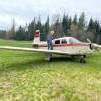Replacing Circuit Breaker
-
Members Online
- TCC
- Allen_D
- LANCECASPER
- EKoS
- 201Mooniac
- dzeleski
- TerminalSpeed
- Schllc
- AspiringOwner
- Nico1
- midlifeflyer
- TNIndy
- EricShr
- Bpvlbv
- Guillaume
- fdc7169
- Tims
- tcal780
- MarkDW
- Andy95W
- jcolgan
- Rmfriday
- mkerian10
- 201er
- Shadrach
- Paul Thomas
- markgrue
- Echo
- Sabremech
- Danb
- Utah20Gflyer
- N201MKTurbo
- BrianWilkins
- Larry
- Cold Coast Aviation
- hypertech
- Jeff Uphoff
- clh
- neilpilot


Recommended Posts
Join the conversation
You can post now and register later. If you have an account, sign in now to post with your account.